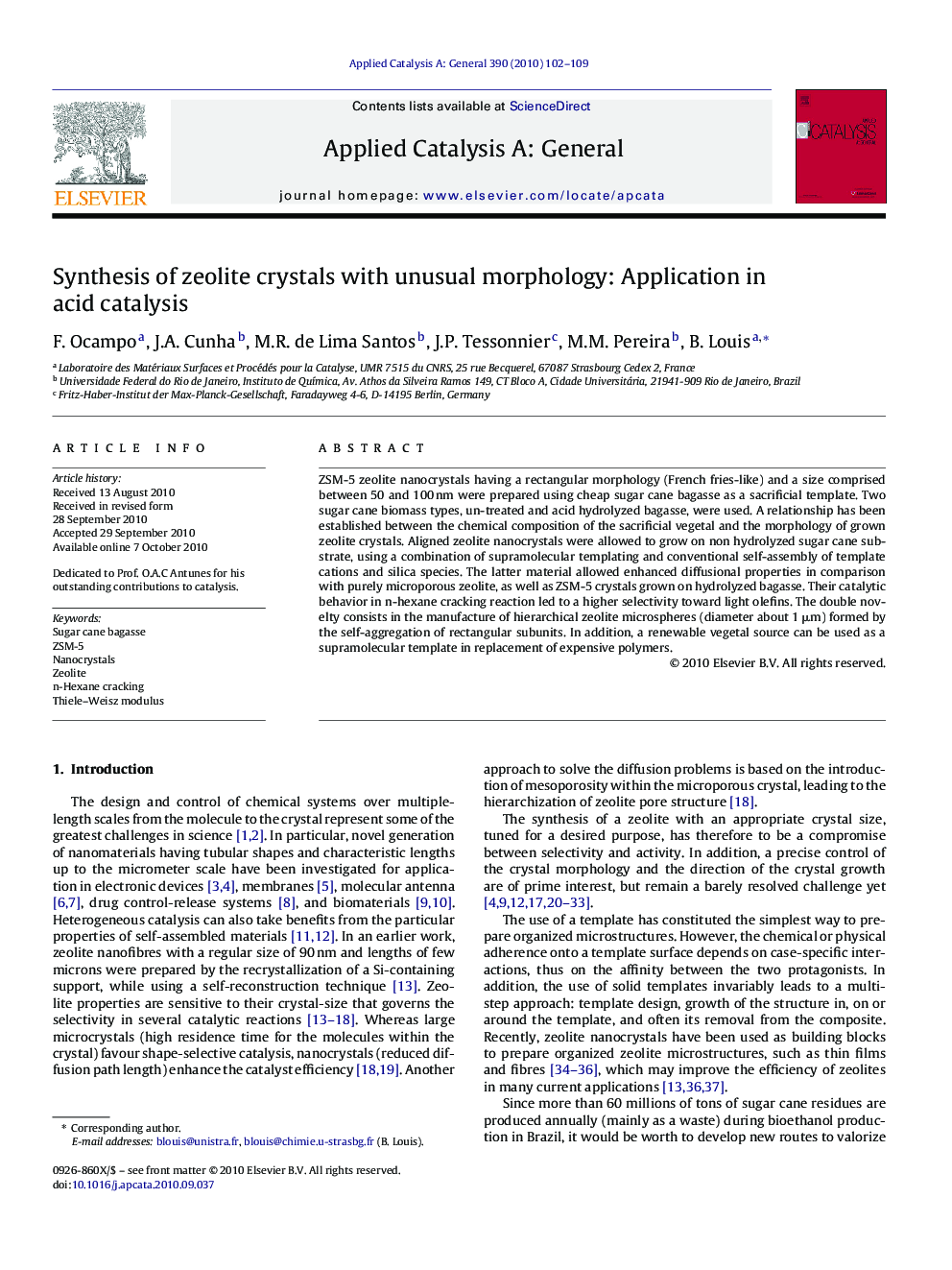| Article ID | Journal | Published Year | Pages | File Type |
|---|---|---|---|---|
| 41529 | Applied Catalysis A: General | 2010 | 8 Pages |
ZSM-5 zeolite nanocrystals having a rectangular morphology (French fries-like) and a size comprised between 50 and 100 nm were prepared using cheap sugar cane bagasse as a sacrificial template. Two sugar cane biomass types, un-treated and acid hydrolyzed bagasse, were used. A relationship has been established between the chemical composition of the sacrificial vegetal and the morphology of grown zeolite crystals. Aligned zeolite nanocrystals were allowed to grow on non hydrolyzed sugar cane substrate, using a combination of supramolecular templating and conventional self-assembly of template cations and silica species. The latter material allowed enhanced diffusional properties in comparison with purely microporous zeolite, as well as ZSM-5 crystals grown on hydrolyzed bagasse. Their catalytic behavior in n-hexane cracking reaction led to a higher selectivity toward light olefins. The double novelty consists in the manufacture of hierarchical zeolite microspheres (diameter about 1 μm) formed by the self-aggregation of rectangular subunits. In addition, a renewable vegetal source can be used as a supramolecular template in replacement of expensive polymers.
Graphical abstractFigure optionsDownload full-size imageDownload high-quality image (182 K)Download as PowerPoint slideResearch highlights▶ Synthesis of ZSM-5 zeolite having a peculiar crystal growth into nano-French fries shaped nanocrystals, 50–100 nm in size. ▶ Use of cheap sugar cane bagasse as a sacrificial exo-template. ▶ Microscopic design of zeolite crystal assemblies. ▶ Twice higher reactivity for rectangular nanocrystal when compared to conventional prismatic micro-sized crystals in the cracking reaction. ▶ High selectivity toward propylene.
